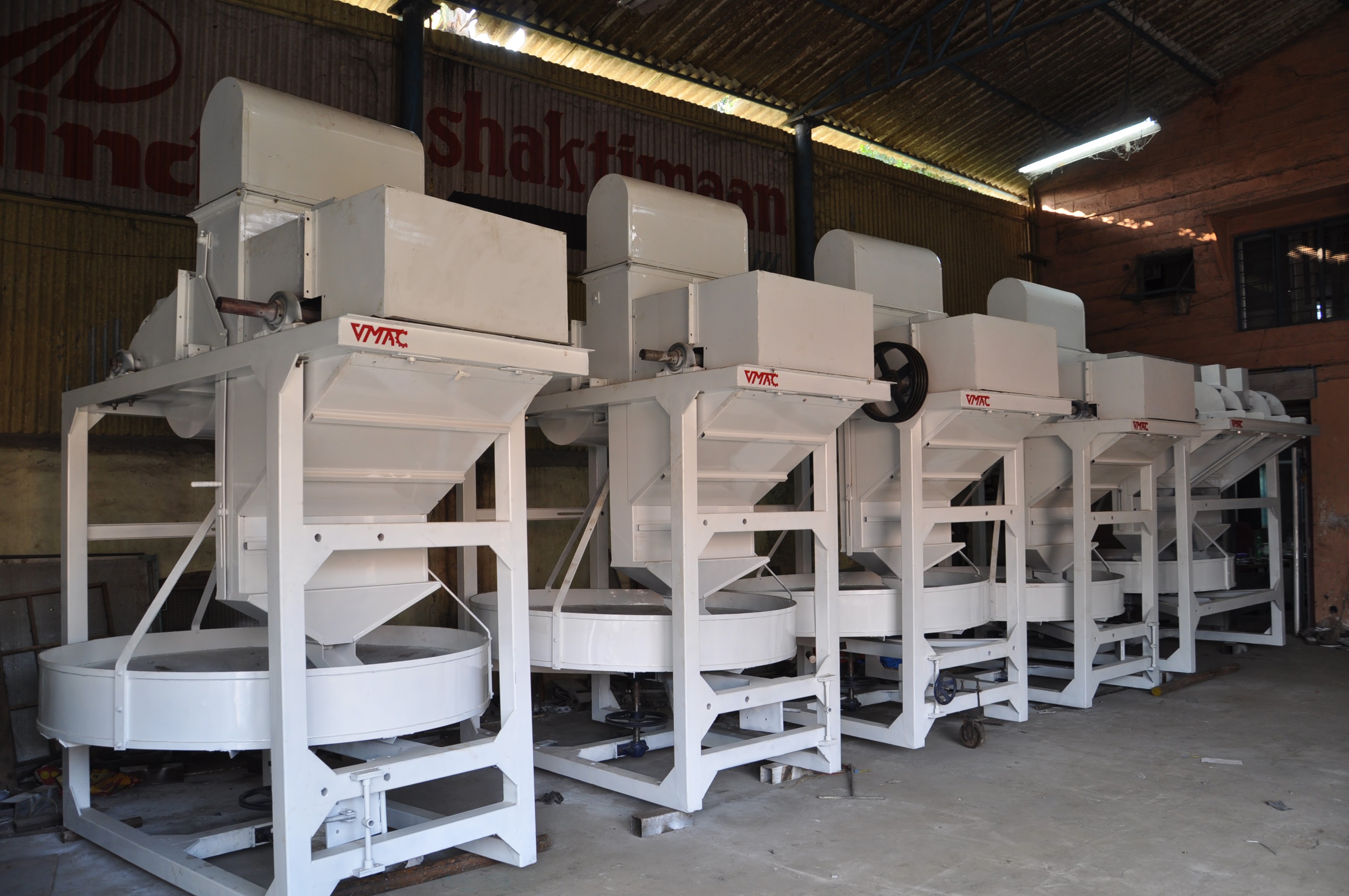
Production
Mastering Coffee Production
At Vmac Industries, we've mastered the balance between traditional craftsmanship and modern technology.
Discover how selecting the ideal coffee huller can boost efficiency, maintain bean integrity, and ensure the highest product quality across different coffee varieties and production volumes.
The coffee hulling stage plays a pivotal role in the post-harvest processing workflow, marking the transition from parchment or dried cherry to the green beans ready for grading, sorting, and eventual roasting. With multiple huller models on the market—each designed with specific capacities, technologies, and features—it’s vital to pick one that aligns with both your bean characteristics and operational scale. This guide explores the key factors to consider in choosing the right huller, so you can streamline your production process and maintain consistently high-quality coffee.
The huller’s job may seem straightforward—removing the outer layers of the bean—but its efficiency and precision directly impact:
Bean Quality
Under-hulling or over-hulling can damage the beans, leading to breakage or leftover parchment that affects flavor and appearance.
Throughput and Productivity
The right huller ensures steady operation without frequent stoppages, letting you handle larger volumes in less time.
Return on Investment (ROI)
Minimizing bean breakage and maximizing operational uptime both drive profitability in an increasingly competitive industry.
Equipment Synergy
When perfectly matched with other machines (destoners, pre-cleaners, etc.), a huller can form part of a seamless, integrated processing line.
Arabica Beans
Usually more delicate, smaller, and more susceptible to damage if the huller exerts too much pressure or friction.
Robusta Beans
Tend to be denser and can handle higher stress levels, but the huller still needs to be adjustable to avoid excess breakage.
For small batches of specialty beans, you may prioritize hullers with fine calibration and gentle operation. Overly large or aggressive hullers can lead to waste and breakage, negating the premium pricing you could earn from specialty coffee.
Different moisture levels—especially in more humid regions—impact the ease of hulling. A huller with adjustable pressure settings or moisture-level compensation features can help maintain consistent results.
Batch-Style Hulling
Typically lower throughput, but flexible enough for smaller operations or micro-lot processing.
Key Considerations
Compact footprint to save space.
Simple controls for operators who handle multiple processing tasks.
Continuous-Flow Hullers
Designed for high-volume processes, these machines handle beans constantly, significantly boosting productivity.
Key Considerations
Automated features that minimize manual oversight.
Robust build quality to handle round-the-clock operation.
Scalability or modularity for future expansions.
Abrasive Hullers
Use rough surfaces to scrape off parchment; effective for certain bean types but can increase breakage if not calibrated correctly.
Friction Hullers
Rely on controlled friction within rotating cylinders or rollers; typically yield a smoother process but may require precise settings for optimal results.
Look for hullers with micrometer adjustments or user-friendly control panels that let you fine-tune pressure and clearance. This flexibility becomes invaluable when switching between bean sizes or moisture levels.
Energy costs can make up a significant portion of operational expenses. Opt for machines that feature energy-efficient motors or adjustable power settings to handle different bean loads without excess consumption.
Stainless Steel Components
Resist corrosion and prolong machine life, especially in humid or coastal regions.
Heavy-Duty Cast Parts
Withstand continuous, high-volume operation without wearing down quickly.
Maintenance Hatches
Quick access points reduce downtime for routine checks or parts replacement.
Spare Parts Availability
Partnering with manufacturers who provide a robust after-sales support network ensures minimal disruption.
Advanced hullers may include sensor-based monitoring for real-time detection of worn parts or overloading. Such features can slash unplanned downtime and repair costs.
If your beans have stones, sticks, or other debris, pairing a destoner or pre-cleaner with the huller ensures a smoother process. This synergy prevents unnecessary wear on the huller and further improves end-product quality.
After hulling, machinery like destoners and gravity separators can pick out any remaining impurities or defective beans, further elevating your coffee’s grade. Ensuring your chosen huller outputs beans consistently and evenly helps these subsequent machines perform at their best.
For mid-to-large operations, conveyor belts or bucket elevators can connect the huller to upstream or downstream machines, creating a near-seamless processing line that reduces manual labor and bean handling time.
Calibrate Regularly
Test hull pressure using small batches to confirm you’re removing just enough parchment without chipping beans.
Monitor Moisture Content
High moisture beans can stick or require more force; consider adjusting hulling settings or slightly drying beans beforehand.
Frequent Cleaning
Built-up parchment or dust can clog the huller’s mechanisms, causing inefficiencies or damage.
Routine Maintenance
Follow the manufacturer’s recommended schedule for lubrication, belt tension checks, and part replacements to avoid breakdowns.
Choosing the right coffee huller is not a one-size-fits-all decision. It requires aligning machine features with your bean types, production volumes, and desired product quality. From small-batch specialty roasters to large-scale commercial producers, ensuring the correct huller functionality translates directly to fewer losses, smoother workflows, and higher profit margins. By considering factors like variety specifics, throughput, and integration with the rest of your processing line, you can make an informed investment that pays dividends in consistency and bean excellence.
Lastest blog posts